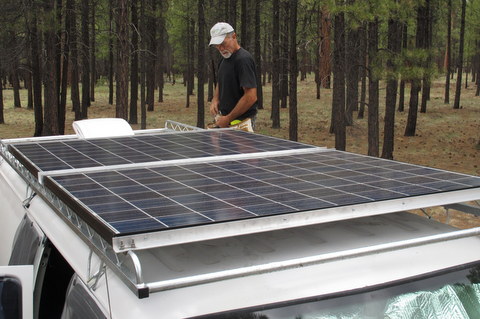In researching solar panels for a near future van conversion, I've noticed a couple of things. The cheapest watts/dollar solar panels seems to be the large ones in the neighborhood of 300 watts, and that the more panels the more complex the wiring and mounting needs be.
So, I'm wondering what the disadvantages are of using a single, large solar panel instead of several smaller ones within the same general footprint. Is the larger panel more or less efficient? Does the fact that the larger panel runs at a higher voltage convey any advantages in terms of lower light charging, or whatever else? Would running the smaller panels in series negate this, or would the series connections result in more or less efficiency? So on and so forth.
It seems like just mounting a single panel, with fewer holes drilled, fewer wires, and a lower price per watt is the way to go. Unless there is some key piece of information I'm missing?
Thanks in advance. Long time lurker. Nice to meet everyone.
So, I'm wondering what the disadvantages are of using a single, large solar panel instead of several smaller ones within the same general footprint. Is the larger panel more or less efficient? Does the fact that the larger panel runs at a higher voltage convey any advantages in terms of lower light charging, or whatever else? Would running the smaller panels in series negate this, or would the series connections result in more or less efficiency? So on and so forth.
It seems like just mounting a single panel, with fewer holes drilled, fewer wires, and a lower price per watt is the way to go. Unless there is some key piece of information I'm missing?
Thanks in advance. Long time lurker. Nice to meet everyone.











































































